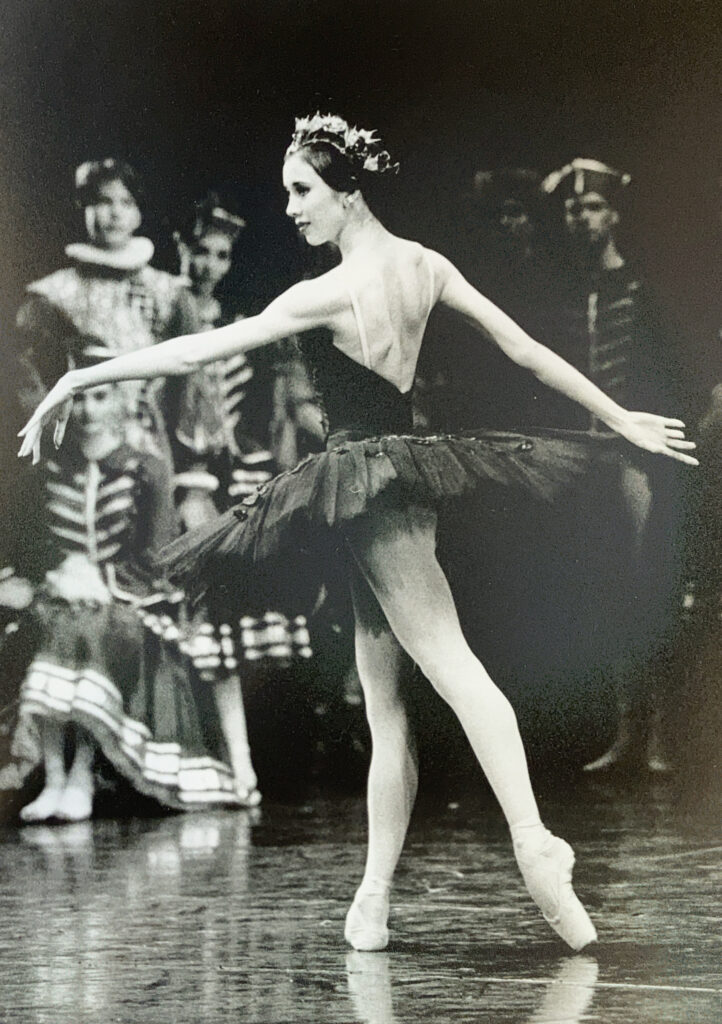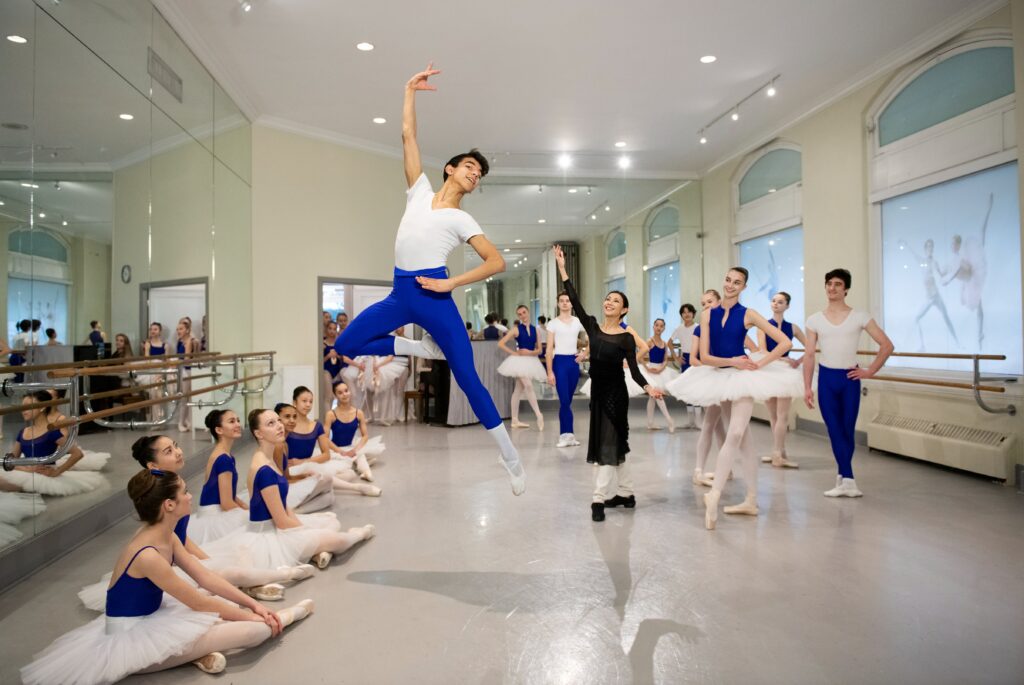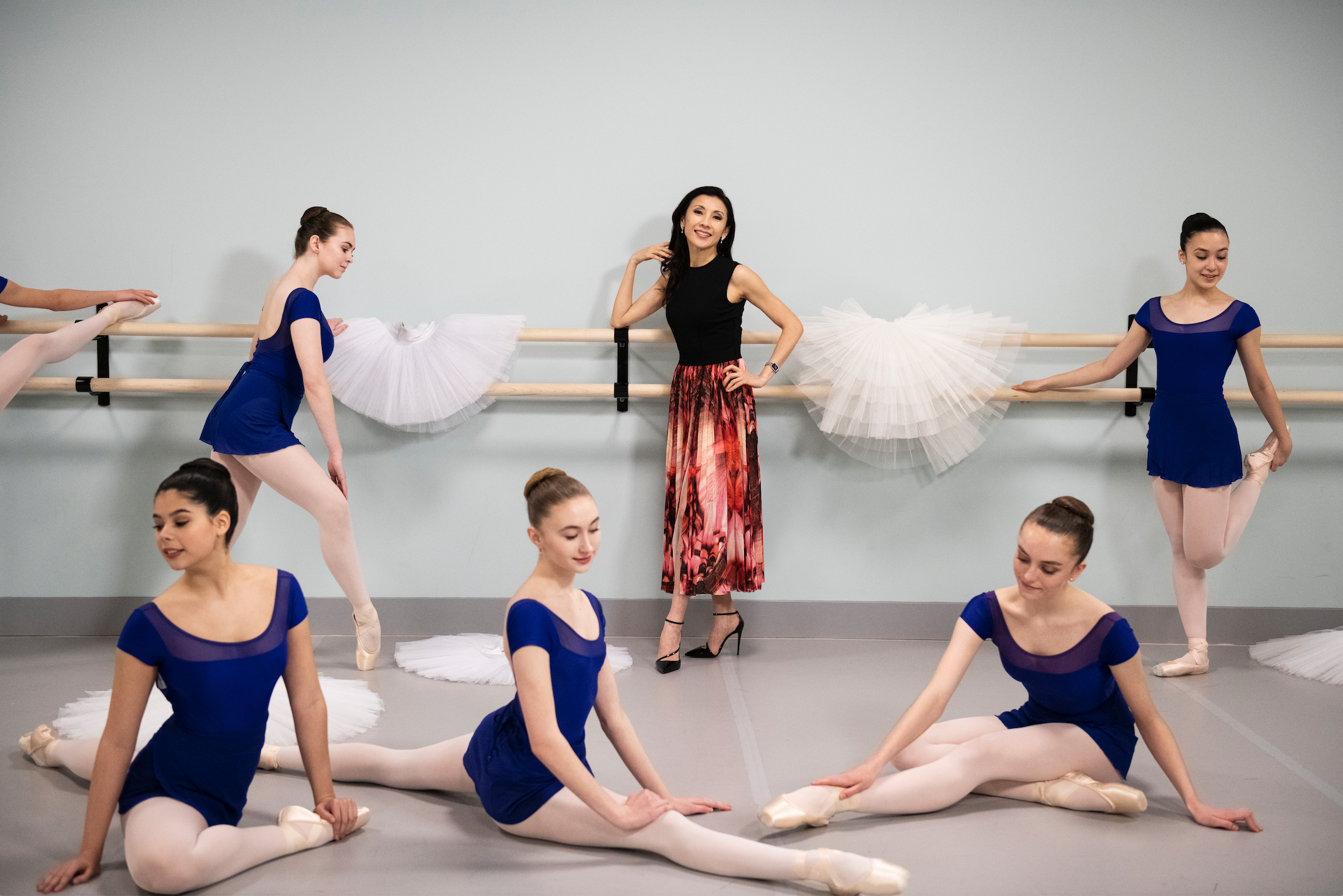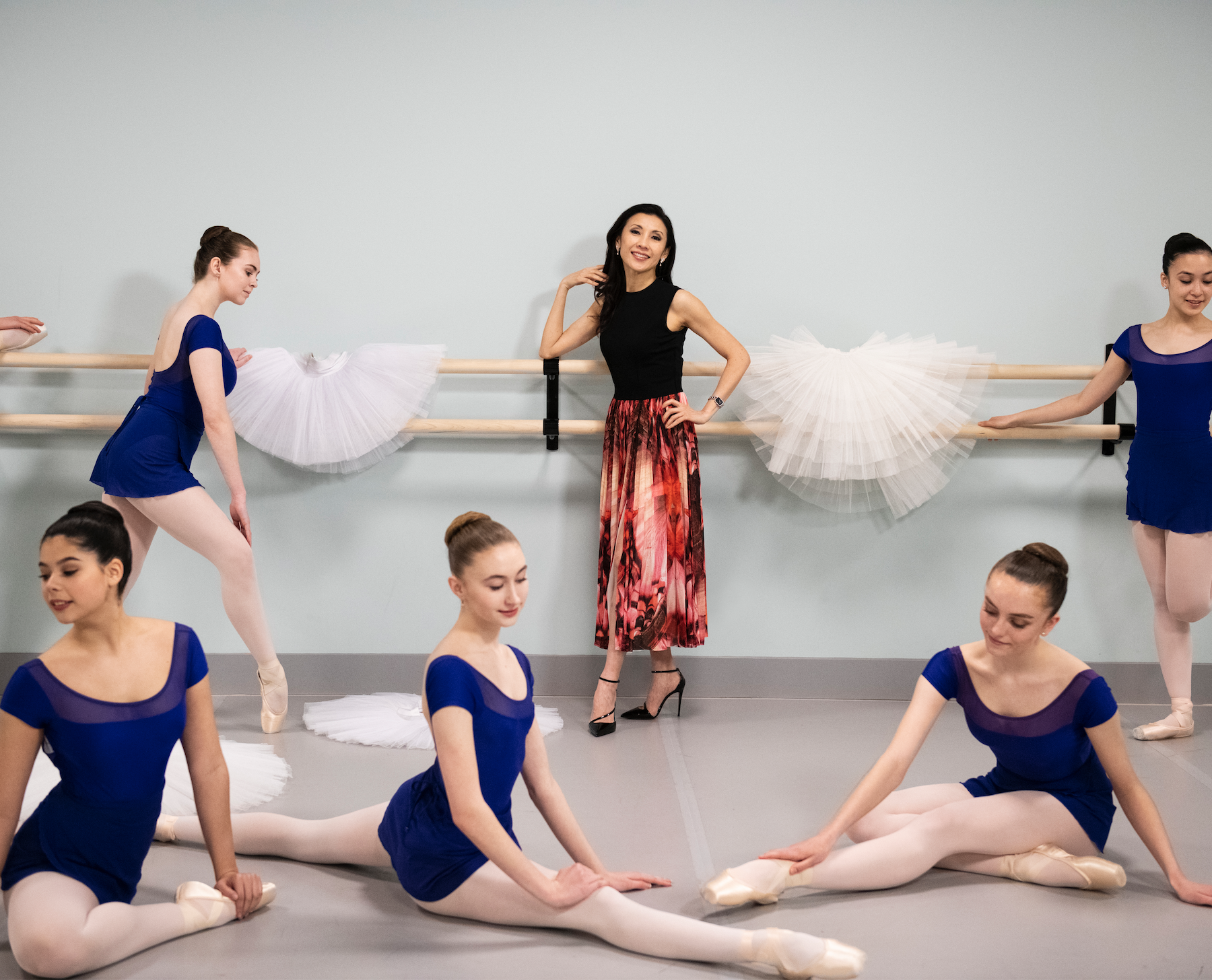Prima ballerina Chan Hon Goh is an enthusiastic proponent of ballet classes for adults. She says people are familiar with Pilates, or spin class, but haven’t necessarily considered ballet as a way toward healthy living.
“It’s almost like going into a sanctuary for an hour,” she says. “It’s hard work, you’re sweating and you’re burning calories, too; it’s challenging. And you’re like, ‘I just can’t get that step,’ and then you come back and do it some more. … You’re getting a departure from everyday, fundamental exercise. The physical element blended with the artistic [element].”
Goh’s passion for ballet is palpable when she talks about the centuries-old art form. She spent more than two decades dancing with the National Ballet of Canada in classic and wildly famous productions like Swan Lake and Madame Butterfly. She says it’s tough to choose a favourite ballet, but her farewell performance in May 2009 was the title role in the tragic Giselle; the ghostly romance resonates with her.
“All these ballets speak to the power of love and betrayal,” says Goh, noting this also applies to another of her favourite roles: Juliet in Romeo and Juliet. “I guess I’m a romantic at heart.”
Perhaps that’s because ballet, as romantic an art form as there ever was one, has been a part of Goh’s entire life. Her parents, Choo Chiat Goh and Lin Yee Goh, both danced with the National Ballet of China. She immigrated to Vancouver with them in 1977 when she was eight years old. A year later, her aunt instructed her in her very first ballet class, which left her “completely captivated.” She would finish mundane tasks, like homework and chores, as quickly as possible so she could dance more. Her defining trait? Bringing a keen emotional depth to her style, which has always only amplified her on-stage storytelling.

“When I reflect back, I had some language barriers. I didn’t speak English,” she says, remembering when she and her family first moved to Canada. “I had trouble expressing myself through the language the first couple of years, especially.”
It took a toll in those classes and at school, where she often felt different from her peers. But, she says now, “As long as I worked hard, I was achieving something in dance. And that was a very powerful outlet for me.”
It helped, too, when her parents founded the Goh Ballet Academy in Vancouver in 1978; the school was not just a place where she belonged, it was also a place where she would excel. When she was 16, she competed at the prestigious Prix de Lausanne, an annual competition for aspiring professional ballet dancers in Switzerland. Goh had just been tagging along with another student and her dad, leaving “everyone pretty much shocked” when she ended up winning a prize. Unsurprisingly, she was accepted into the National Ballet of Canada right out of high school, eventually becoming their first-ever principal dancer of Chinese descent in 1994. In 2019, she was appointed as a member to the Order of Canada for this distinction, and for her work as an artistic director and cultural ambassador.
“Throughout my career, I was very fortunate,” says Goh. “I never felt any kind of prejudice or discrimination. Not to my face, and not that I know of. I [consider] myself lucky.”
She does, however, remember seeing a racist divertissement (an interlude or short diversion during a ballet or opera) on stage when she went to see a travelling production of The Nutcracker with her family in the 1970s.
“This little girl is travelling through all these countries,” Goh says, describing the beloved Christmas ballet. “When the Chinese divertissement came on, it showed people with straw hats and long braids, holding chopsticks and bowing to each other. It was a horrible caricature of Chinese heritage. My parents left the theatre thinking, ‘Is that how the Western world views Chinese people?’ There was nothing to be done. Everyone left the theatre happy, commenting on how beautiful it was.”

Goh says that, since then, ballet has evolved in positive ways. She points to the pledge “Final Bow For Yellowface,” founded by New York City Ballet soloist Georgina Pazcoguin and arts administrator and educator Phil Chan in 2017. Prominent ballet dancers and companies have signed the pledge, which commits “to eliminating outdated and offensive stereotypes of Asians (Yellowface) on our stages.”
Chan has been an essential presence in Goh’s life. In June, to honour her late uncle, acclaimed choreographer and dancer Choo San Goh, the pair collaborated on a one-night-only performance at the Kennedy Centre in Washington, D.C. The celebration was part of a weeklong tribute to Asian choreography.
“Keeping up with current events and also making sure that ballet is not left out of the conversation, being such a traditional art form, is of major importance,” she says.
Goh retired from the National Ballet of Canada in 2009 and became director of her parents’ school in 2010. There are now Goh Ballet Academy locations in both Vancouver and Toronto, with classes for children and adults.
“It’s not after every class that you’re going to feel like, ‘that was great,’ and that’s part of it,” she says. “That’s part of our own personal growth as well when you’re working on something. And that’s what we’re teaching our youngsters. How do you bounce back from something that’s difficult? How do you bounce back from slipping and falling on stage? You can’t give up.”
Get the
Three from 3
newsletter
Join our global community of sharp, curious thinkers to receive a carefully curated email of the three most important things to read, see and do this week.
Listen and learn.
Tune into Third Culture Leaders, a podcast hosted by our co-founder and publisher, Muraly Srinarayanathas.
Explore how leaders skillfully navigate multiple cultural landscapes, leveraging their diverse backgrounds to drive innovation and change.
Known for her contributions as both a dancer and an advocate for the arts, particularly as an Asian-Canadian woman in a field where minority representation has often been limited, Goh has inspired dancers from diverse backgrounds to pursue their passion and has played a role in challenging and expanding the boundaries of traditional ballet.
Today, Goh lives in West Vancouver with her husband—Chun Che, a former principal dancer with the National Ballet of China—and son. She travelled to Toronto and Montreal this past fall to teach a Masterclass series for kids and teens. It was held at Toronto’s Goh Ballet location in early December, where she gently instructed extremely flexible and talented ballerinas in various exercises, urging them to “reach beyond” their fingers and to incorporate their “entire being” when dancing.
“As much as I want to impart what I know, and how I can help (students across Canada)…I’m also learning from them to better [understand] what I need to do for Goh Ballet’s programming,” Goh says. “I hope what they take away from this short…session is going to stay with them for months of their future training.”
Her career has left a lasting impact on Canadian ballet, not just through her performances but also in her dedication to furthering the art form and providing opportunities for the next generation of dancers.
After a class for preteens, Goh hosted a Q&A where the dancers shyly shared the names of some of their favourite ballets and the competitions they were practising for. Most memorably, Goh encouraged the girls to “test boundaries” and “never be inhibited” in the studio—a lesson for adults as well, both in and out of the studio.

